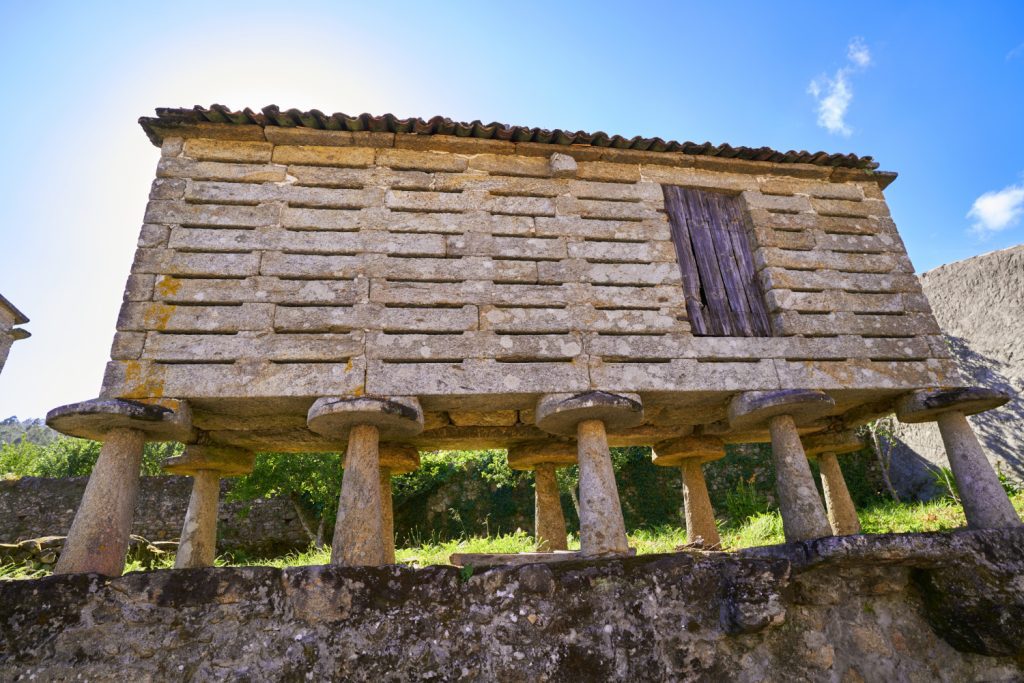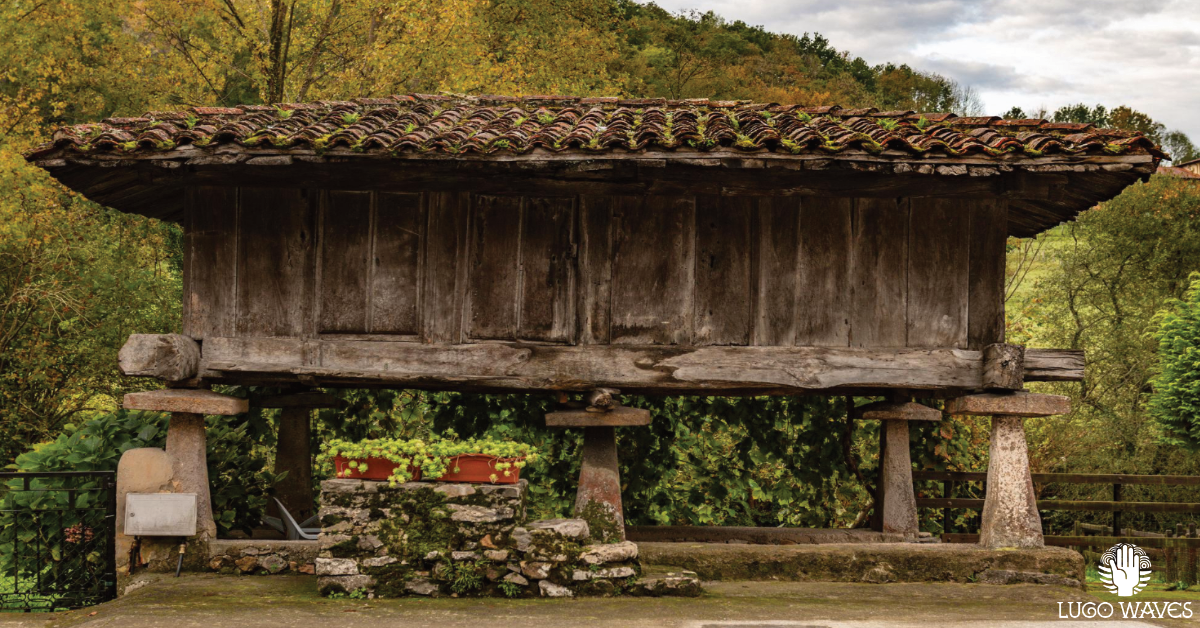If you ever travel to Galicia, a region in the northwest of Spain, you will notice some peculiar structures dotting the landscape. They look like small houses on stilts, with slits on their walls and roofs made of wood or stone. These are horreos, traditional granaries that have been used for centuries to store grain and other food crops.
What are horreos and why are they important?
Horreos are a type of granary that is raised from the ground by pillars (called esteos in Galician) that end in flat staddle stones (called vira-ratos) to prevent access by rodents. The slits on their walls allow ventilation and prevent moisture from accumulating inside. Horreos are usually rectangular-shaped, but some are square-shaped or even circular.
Horreos have a long history and a cultural significance in Galicia. Their origin is unclear, but some Roman texts from the 1st century A.D. mentioned these constructions as useful for agriculture . The oldest graphic representation of horreos dates from the 12th century . Horreos were essential for rural life, as they provided food security and storage for farmers. They also reflected the social status and wealth of their owners, as larger and more decorated horreos indicated higher prestige.
Today, most horreos are no longer used for their original purpose, but they are still valued as historical monuments and symbols of Galician identity. They are protected by the state since 1973 and many have been restored or preserved as tourist attractions or museums.

Where can you see horreos in Galicia?
Of course we have our own special horreos here on the Lugo coast, however horreos can be found all over Galicia, but some places have more concentration or variety than others. Here are some of the best places to see horreos in Galicia in addition to the ones you’ll find in a Mariña:
- Combarro: This small fishing village in Pontevedra has 60 horreos , which is the largest number in Galicia. Most of them face the sea, which facilitated the transport and storage of goods among neighboring villages. These were declared Conjunto de Interés Artístico y Pintoresco in 1972. Combarro is also known for its granite architecture and its picturesque location on a arrow peninsula.
- Carnota: This town in A Coruña has the longest horreo in Galicia , measuring 35 meters long . It was built in the 18th century by a local priest who wanted to show off his power . It has two floors and can store up to 40 tons of grain .
- Araño: This village in A Coruña has another impressive horreo that measures 37 meters long . It was built on the grounds of the church of Santa Baia in the 17th century . Unlike most horreos, it does not sit on pillars but on a stone structure .
- Lira: This village near Carnota has another large horreo that measures 36 meters long. It stands on typical pillars that most horreos have. It was built by several families who shared its use.
- Lugo coast: This area along the Atlantic coast has many examples of horreos with different shapes and styles. You will see some which are square-shaped or circular, some have roofs made of slate or tiles and you will find others with carvings and painting on the walls. They add charm and character to this scenic region.

Horreo Spotting
Horreo spotting on the Lugo coast is a fun activity that will allow you to discover some hidden gems of Galician culture and nature. You will be amazed by how diverse and beautiful these granaries are and how they blend with their surroundings. Don’t forget to take photos
as you go and if you post on Instagram, don’t forget to use the #horreo hashtag 🙂

